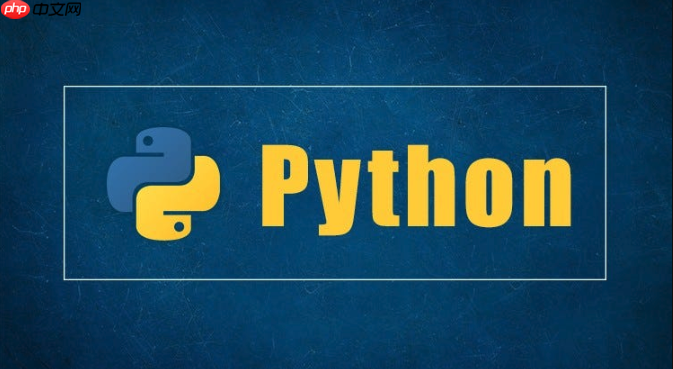使用锁、队列和线程本地存储保障Python多线程安全:通过Lock避免竞态条件,RLock支持递归加锁,Queue实现线程安全通信,threading.local隔离线程状态,ThreadPoolExecutor简化线程管理,优先减少共享状态。

在Python多线程编程中,多个线程共享同一进程的内存空间,因此全局变量可以被所有线程访问。这虽然方便了状态共享,但也带来了数据竞争和状态不一致的风险。要安全地管理全局状态,必须采取合适的同步机制。
当多个线程读写同一个全局变量时,如果没有同步控制,可能导致数据错乱。最常用的解决方案是使用 Lock 对象来确保同一时间只有一个线程能修改共享状态。
示例:定义一个全局计数器,并用锁保护其增减操作:
```python import threading import timecounter = 0 counter_lock = threading.Lock()
def increment(): global counter for _ in range(100000): with counter_lock: counter += 1
def decrement(): global counter for _ in range(100000): with counter_lock: counter -= 1
t1 = threading.Thread(target=increment) t2 = threading.Thread(target=decrement) t1.start() t2.start() t1.join() t2.join()
print(counter) # 结果应为0
立即学习“Python免费学习笔记(深入)”;
<p>通过 <strong>with counter_lock</strong>,确保每次只有一个线程能执行修改操作,避免竞态条件。</p>
<H3>使用 threading.RLock(可重入锁)处理递归或嵌套调用</H3>
<p>普通 Lock 不允许同一线程多次 acquire,否则会死锁。如果在函数内部多次请求锁(如递归或调用链),应使用 <strong>Rlock</strong>。</p>
```python
import threading
shared_data = []
lock = threading.RLock()
def add_and_log(item):
with lock:
shared_data.append(item)
log_state() # 如果 log_state 也需要锁,则 RLock 可避免死锁
def log_state():
with lock:
print(f"Current data: {shared_data}")queue.Queue 是线程安全的队列实现,适合用于生产者-消费者模式,替代手动管理共享列表或变量。
```python from queue import Queue import threadingdef producer(q): for i in range(5): q.put(f"item-{i}")
def consumer(q): while True: item = q.get() if item is None: break print(f"Consumed: {item}") q.task_done()
q = Queue() t1 = threading.Thread(target=producer, args=(q,)) t2 = threading.Thread(target=consumer, args=(q,))
t1.start() t2.start()
t1.join() q.put(None) # 发送结束信号 t2.join()
<p>Queue 内部已做好线程同步,开发者无需额外加锁。</p>
<H3>避免共享状态:优先使用局部状态或 threading.local</H3>
<p>减少共享状态是避免并发问题的根本方法。Python 提供 <strong>threading.local()</strong> 创建线程本地存储,每个线程拥有独立副本。</p>
```python
import threading
local_data = threading.local()
def process(name):
local_data.name = name
print(f"Thread {local_data.name} processing")
t1 = threading.Thread(target=process, args=("T1",))
t2 = threading.Thread(target=process, args=("T2",))
t1.start()
t2.start()每个线程对 local_data.name 的赋值互不影响,有效隔离状态。
对于大多数任务,推荐使用 concurrent.futures.ThreadPoolExecutor,它封装了线程池和任务调度,配合返回值处理更安全。
```python from concurrent.futures import ThreadPoolExecutordef task(n): return n ** 2
with ThreadPoolExecutor(max_workers=4) as executor: results = list(executor.map(task, [1, 2, 3, 4, 5])) print(results) # [1, 4, 9, 16, 25]
<p>该方式减少手动创建线程带来的状态管理复杂度。</p> 基本上就这些。关键在于:**有共享写操作就必须加锁,能不用共享就不用,优先选择线程安全的数据结构如 Queue**。
以上就是Python多线程如何管理全局状态 Python多线程状态共享安全策略的详细内容,更多请关注php中文网其它相关文章!

每个人都需要一台速度更快、更稳定的 PC。随着时间的推移,垃圾文件、旧注册表数据和不必要的后台进程会占用资源并降低性能。幸运的是,许多工具可以让 Windows 保持平稳运行。

Copyright 2014-2025 https://www.php.cn/ All Rights Reserved | php.cn | 湘ICP备2023035733号